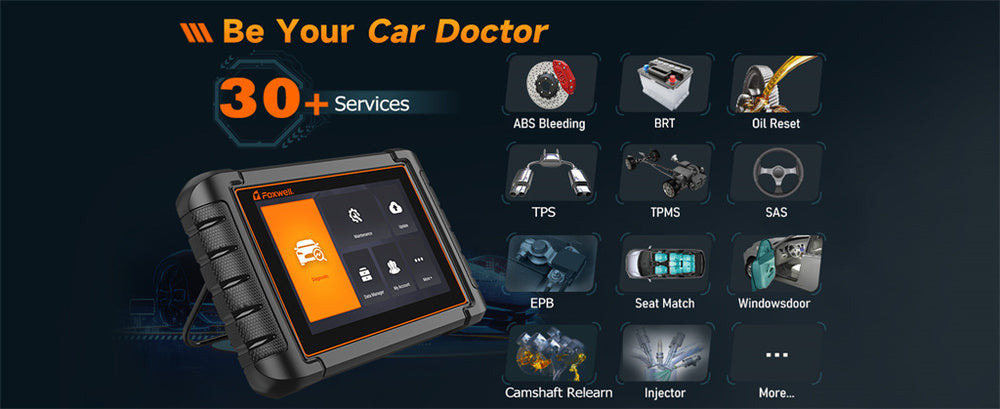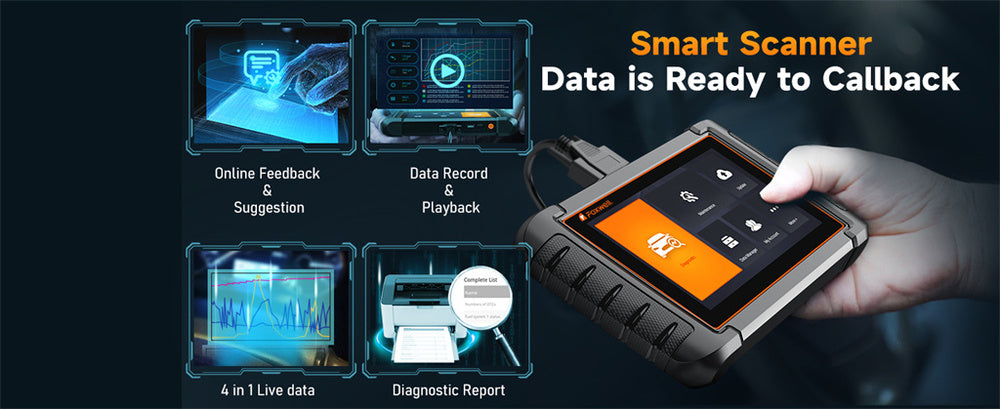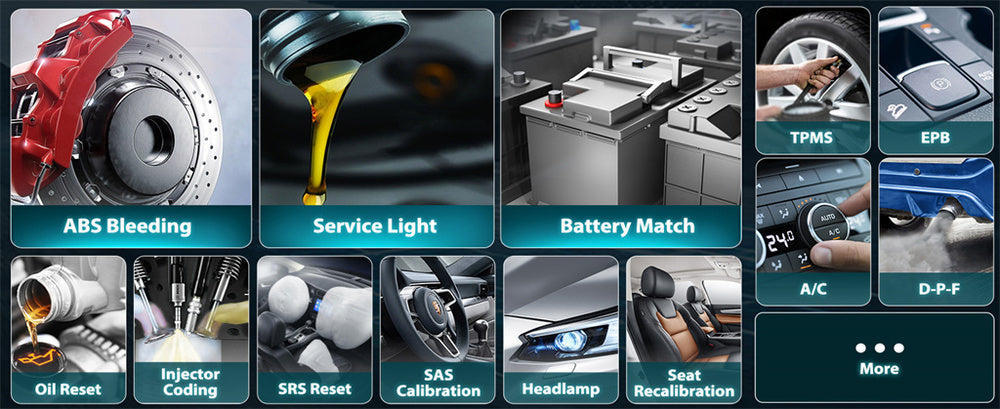Assuring your vehicle's airbag system is functioning optimally is of utmost importance for its safe operation and can mean life or death in an accident. Understanding how to use an OBD2 scanner effectively to diagnose airbag issues is therefore of equal importance, especially as an enthusiast or responsible vehicle owner who wishes to maintain top-tier safety.
Over the years, through trial-and-error and direct experience I've developed some invaluable tips that make reading airbag codes both efficient and effective; I hope to share these insights with you so you can maximize its full potential!
Select an OBD2 Scanner

My Experience
Not all OBD2 scanners are created equal. Initially, I relied on an basic model which did not support airbag diagnostics - an experience which was both frustrating and time wasting. Investing in the right scanner makes a world of difference!
I can recall my initial shock at being presented with an airbag warning light on my dashboard, plugging my basic OBD2 scanner to read out its code and offer direction; unfortunately it did not support airbag diagnostics. After some research and consideration, I decided on investing in the Foxwell NT809BT due to its advanced features and comprehensive diagnostic capabilities.
Foxwell NT809BT was an incredible lifesaver; it provided detailed airbag codes and suggested potential causes and fixes. When I used it for the first time, I was able to diagnose a sensor fault in my airbag system with ease; moreover, having access to this tool gave me confidence to address it myself; further illustrating its significance.
How to Select an Appropriate Scanner
In order to effectively read airbag codes, make sure your scanner supports SRS (Supplemental Restraint System) diagnostics. When searching for the ideal scanner, look for these features:
Compatibility: Select a scanner compatible with your car's make and model, as well as software updates that feature new vehicles and diagnostic codes.
Ease of Use: Make sure the user-friendly interface simplifies navigation and diagnostics for optimal results.
Advanced Features: Take into account additional functionalities, such as live data monitoring, ABS (Anti-lock Braking System) diagnostics and comprehensive system checks as advanced features.
As I began working on my car, I didn't understand the significance of having the appropriate tool. At first I purchased an inexpensive but basic OBD2 scanner thinking it would cover all my needs; this worked fine with engine codes but wasn't much help when my airbag warning light appeared. After doing some research and several futile attempts with that scanner, I upgraded to more advanced model which quickly unlocked airbag codes and gave me accurate diagnoses; saving both time and giving peace of mind knowing I was getting accurate diagnostics.
Keep Your Scanner Current
This cannot be overemphasized enough: keeping your scanner's software current can make a substantial difference to diagnosis. I recall losing out on diagnosing newer vehicle models simply due to outdated software on my scanner.
How to Do It
Stay current by regularly visiting the manufacturer's website and reviewing updates or software tools provided with your scanner, such as easy-to-follow instructions or software tools designed to keep you current.
Foxwell NT809BT makes updating software simple. Equipped with Wi-Fi connectivity, updating is quick and effortless; regular updates ensure compatibility with new vehicle models as well as reading of diagnostic codes from across all brands and models. Staying on top of updates could save significant headaches down the line.
Learn to Read Airbag Codes
At first, understanding airbag codes seemed like another language; however, comprehending them accurately for accurate diagnosis is key.
Tools to Help
Referring to your scanner's manual or an online database may provide valuable assistance. Common airbag codes like B0010 (driver's frontal deployment loop) and B0020 (passenger's frontal deployment loop) may indicate specific problems; thus a good resource would be your vehicle service manual or websites dedicated to OBD2 codes.
Foxwell NT809BT features an in-built code library with detailed explanations for every code it detects, making this scanner especially helpful in quickly understanding what each error means without needing to consult multiple resources separately. For instance, when decoding B0010 error codes it will explain they relate to frontal deployment loop deployment of drivers thus prompting further investigations in that specific area.
Use Proper Diagnostic Procedures My Step-by-Step Process
As always, safety must come first! Before beginning any diagnostic work on a vehicle, be sure to turn it off with both key removed from ignition to avoid accidentally activating its airbags.
Connect the Scanner: Locate and plug into the OBD2 port under your dashboard to connect your scanner.
Turn On Ignition Without Starting Engine (On Without Ignition). Select Airbag System via Scanner Menu - This system should appear under "Airbag System"
Follow the prompts to access and read stored airbag codes using the Foxwell NT809BT's user-friendly process of reading airbag codes. Its touchscreen interface makes navigation effortless while its comprehensive menu enables quick diagnosis of airbag issues. Following these steps methodically ensures accurate readings while mitigating potential safety risks.
Take Action Based on Codes
I made the mistake of clearing codes without first addressing their root cause; as expected, my problems returned immediately after clearing codes were cleared out. Always consider fixing any potential root issues prior to clearing codes.When to Seek Help
If the issue seems complex, don't hesitate to seek professional assistance. Airbag systems are intricate systems and mishandling them could prove hazardous. For simpler issues, follow your scanner or vehicle manual's repair guidelines as these could save lives.
The Foxwell NT809BT not only reads and clears codes, but it also provides repair suggestions based on your diagnosed issue. This feature can save both time and effort when performing repairs yourself; however for more complex issues it's always a good idea to consult a professional mechanic to ensure safety and accuracy.

Conclusion
Mastering OBD2 scan reading airbag codes is essential to maintaining vehicle safety. By choosing and updating the appropriate scanner, learning to understand codes properly, following proper procedures, and taking necessary action based on my own trial-and-error experience, you can ensure your airbag system remains in top shape. These tips have helped me identify issues more efficiently while keeping vehicles safer on the roads.
As I've gained through experience, these steps not only save time and money but also increase safety. They can make an important difference to anyone's vehicle diagnostic process - from car enthusiasts to those just wanting to keep theirs running properly! So get scanning today!
FAQs:
How do I connect an OBD2 scanner to read airbag codes?
Plug the OBD2 scanner into the vehicle's diagnostic port, usually located under the dashboard.
What should I do if my OBD2 scanner doesn't read airbag codes?
Ensure your scanner is compatible with airbag systems and update its software if necessary.
Can I clear airbag codes with an OBD2 scanner?
Yes, many OBD2 scanners allow you to clear airbag codes after resolving the underlying issue.




Leave a comment
This site is protected by hCaptcha and the hCaptcha Privacy Policy and Terms of Service apply.